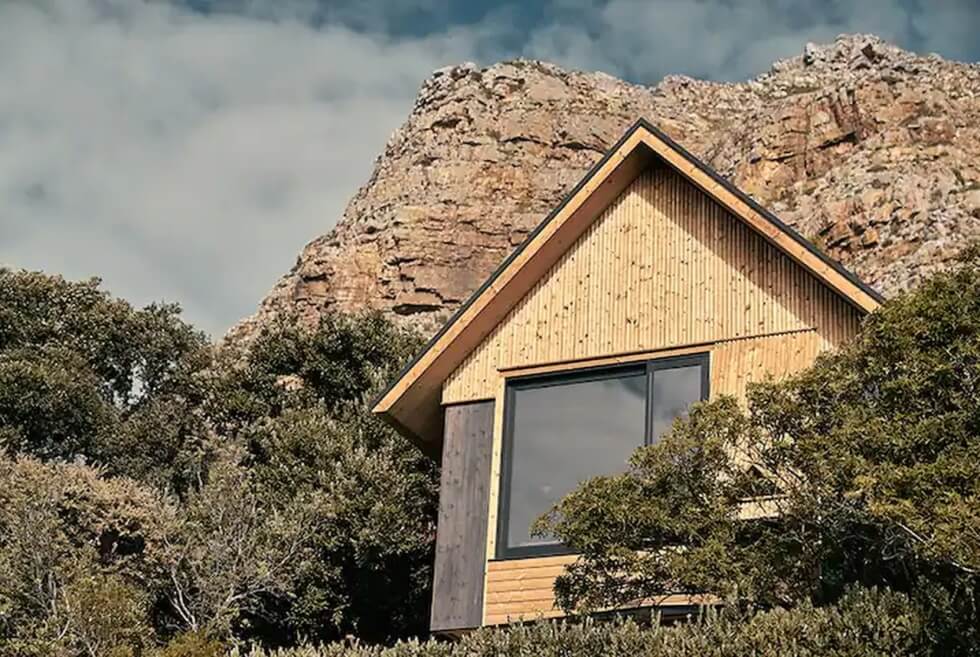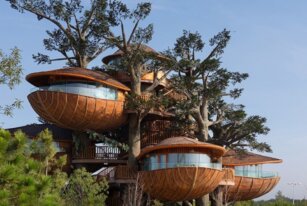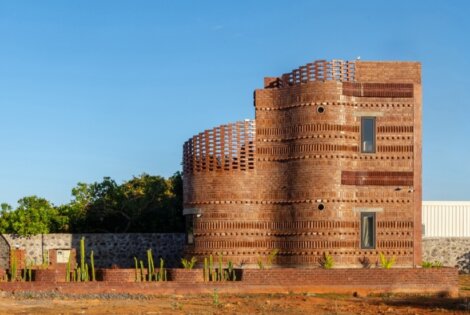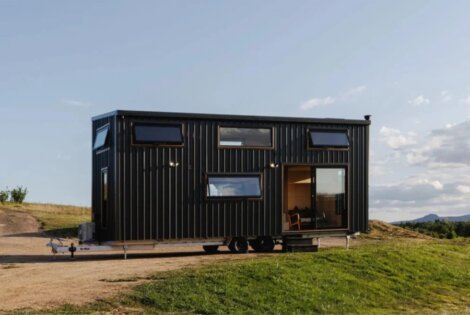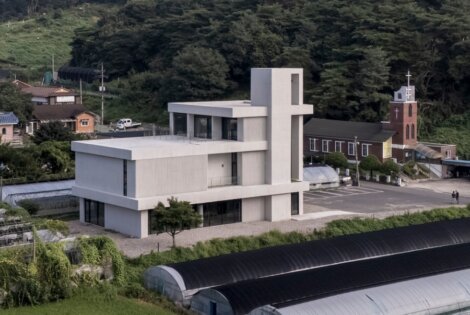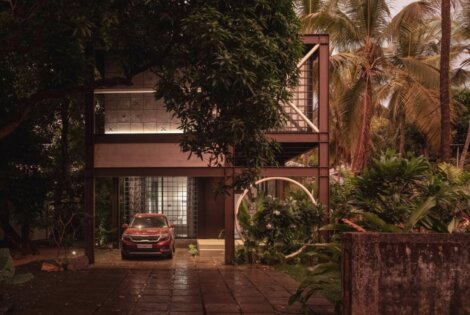Alexander McGee of INNATE HOMES constructed the Owl House in Muizenberg, the coastal suburb of Cape Town, using lightweight cross-laminated timber (CLT). Using CLT not only helps with the environment but also made it possible to assemble the home in a remote location.
McGee and his team first built the entire home off-site in a warehouse. Using CLT made it a fairly quick process to assemble the cabin on-site, it only took under three weeks. CLT also created near zero waste during the construction process and was a great choice given the topographical location.
The material provided the Owl House with excellent thermal and sound insulation. McGee also added solar panels for the cabin’s main power. He opted not to have gutters on the roof so that rainwater can freely fall from different angles. “We’re spoiled in South Africa with some of the most naturally beautiful sites found anywhere in the world. As an architect, I view it as my responsibility to demonstrate an alternate solution to settling in these environments,” he said.
The house offers 390-square-foot of space and has a generous window seat that fills the interiors with natural lighting. It’s designed with a 45-degree pitched roof with huge eaves so it can accommodate a standing mezzanine with a bed accessible via a retractable ladder.
The Owl House also comes with plenty of storage space including the cedar shelving which came from a scrapyard and the reclaimed travertine sink came from McGee’s stonemason friend. McGee said when he first moved into the cabin, he saw a couple of eagle owls nestled in the palm trees. He eventually added built-in owl boxes to the exterior of the home which could explain its name. The house is available for rent on Airbnb.
Check It Out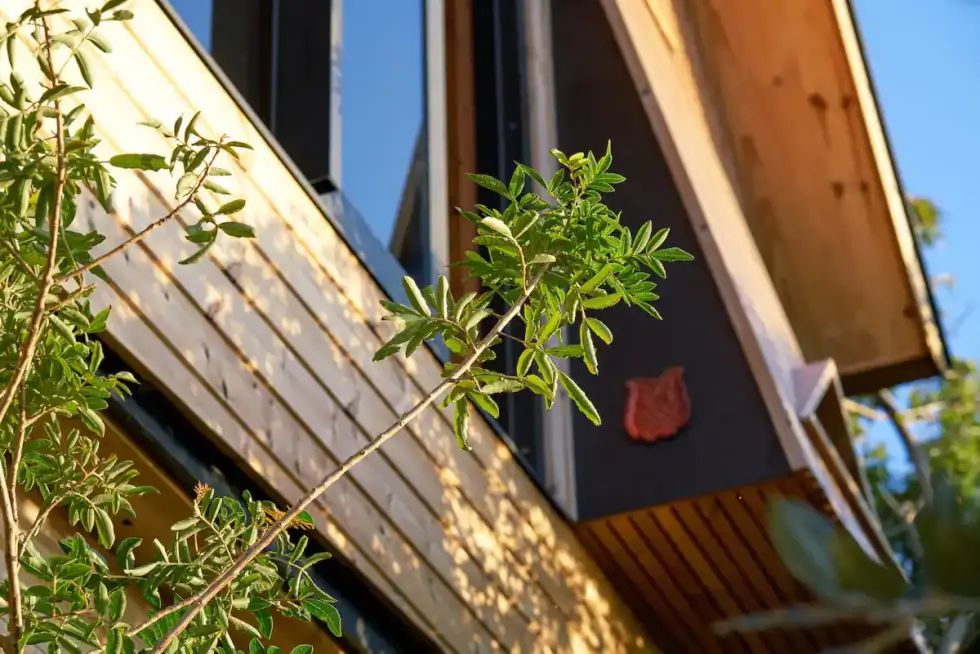
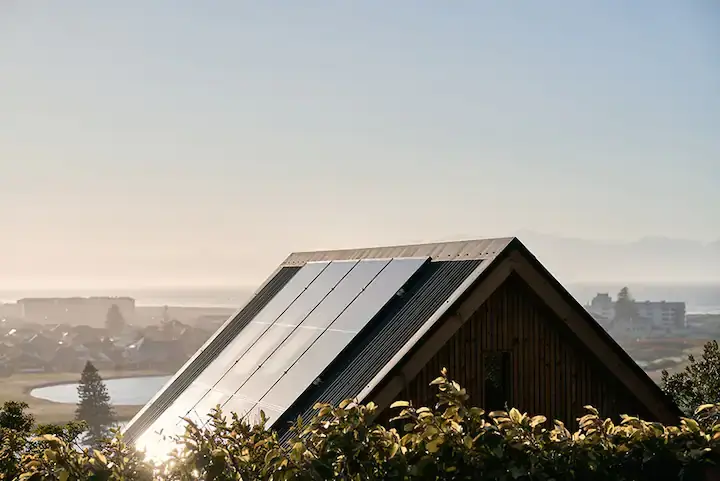
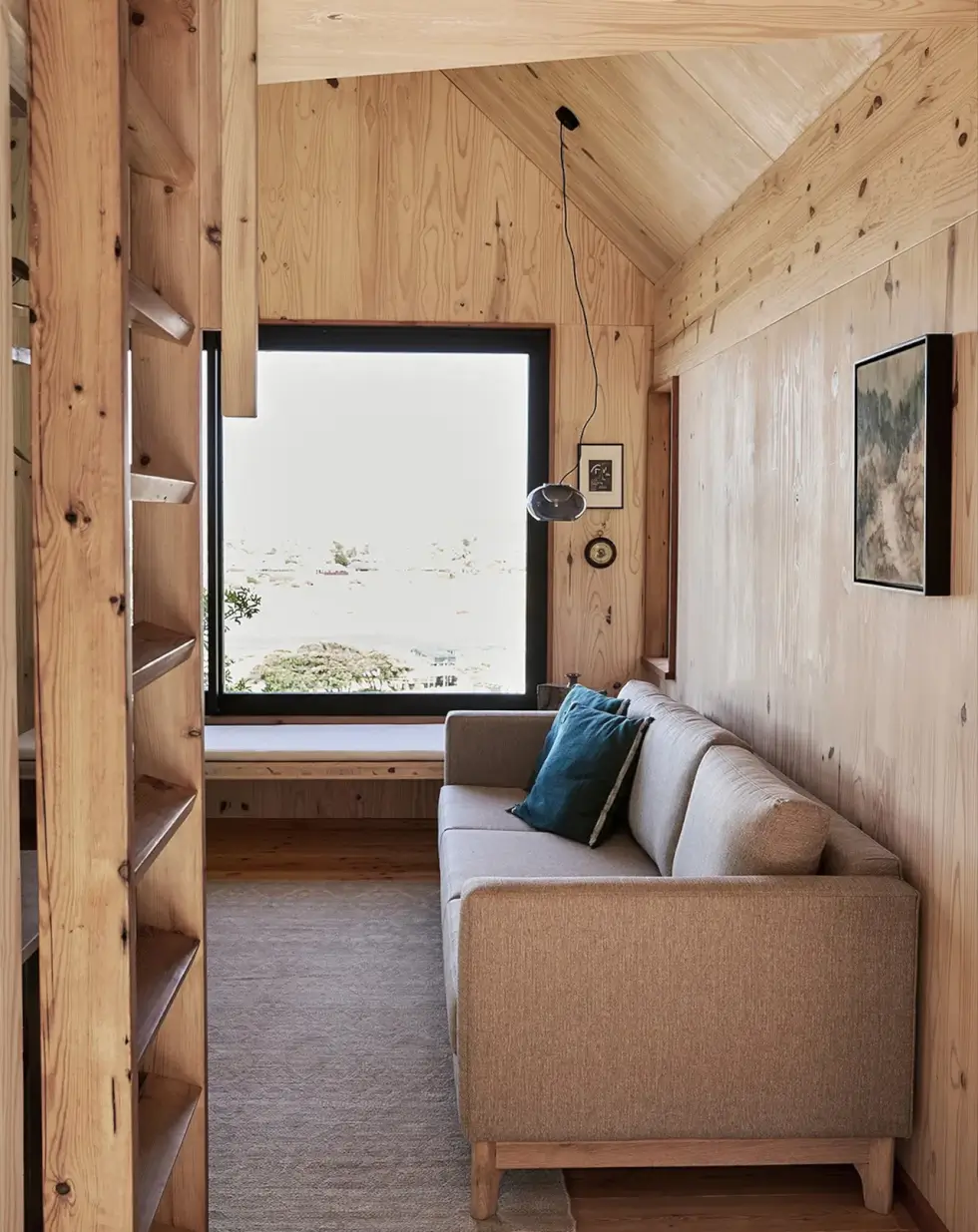
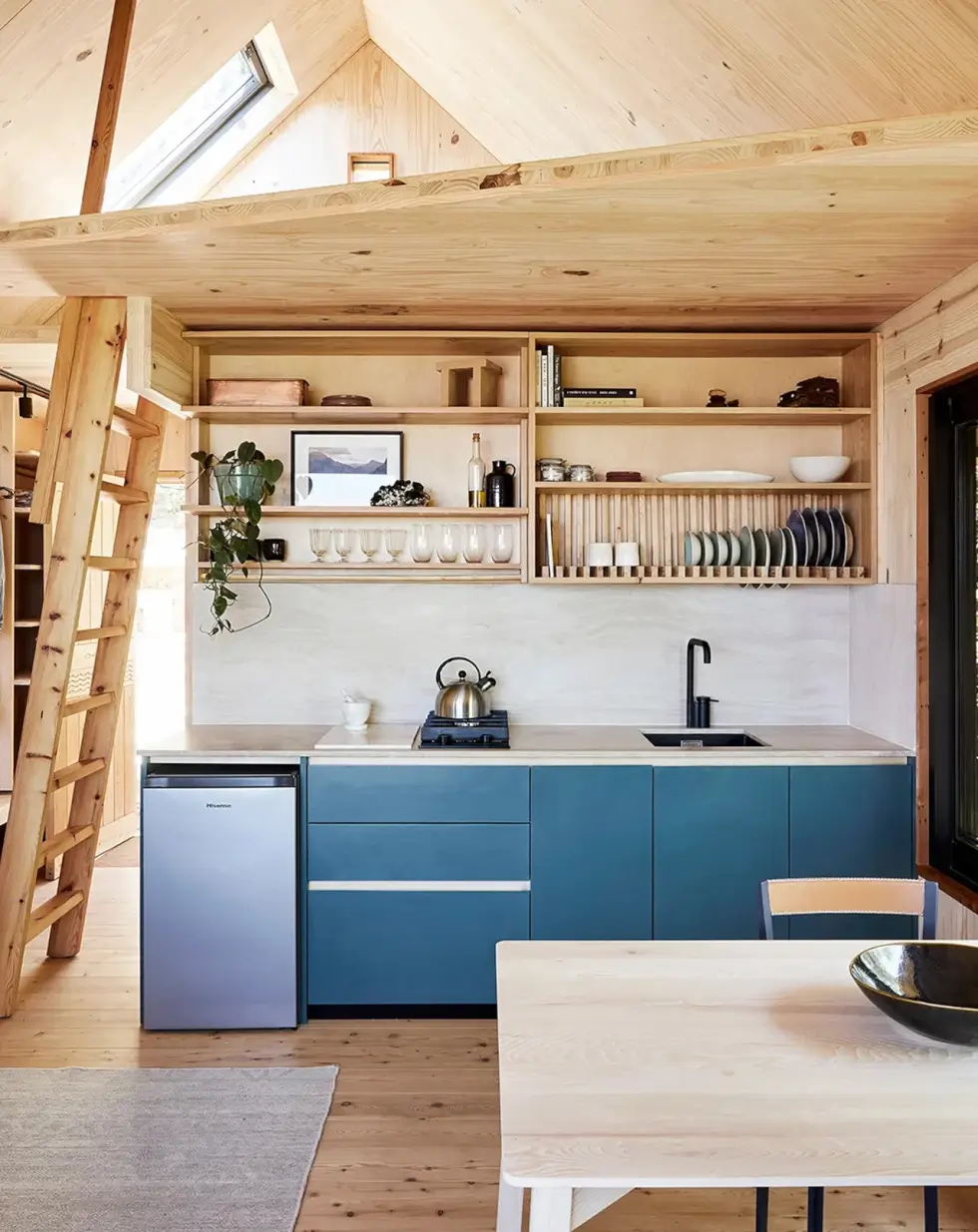
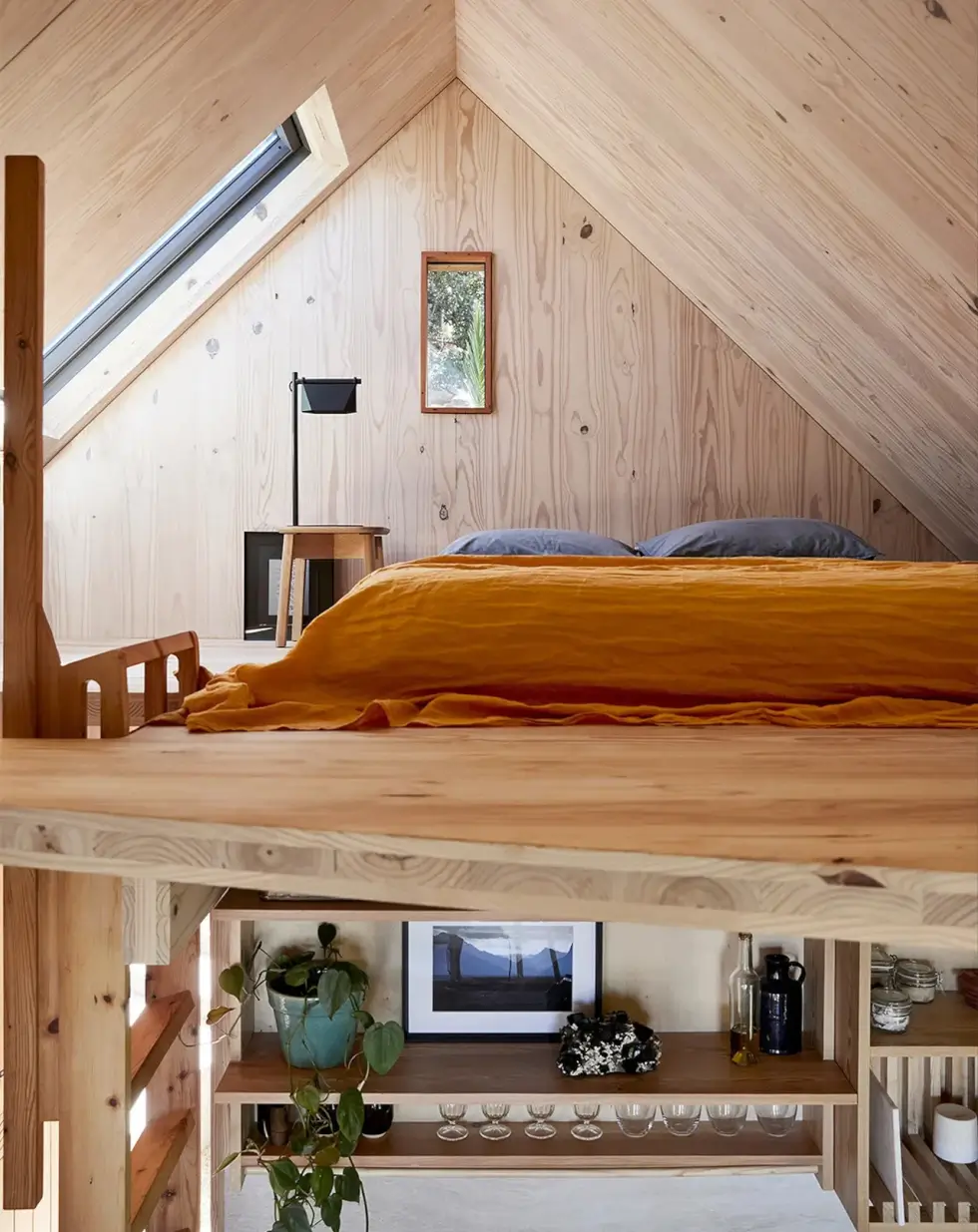
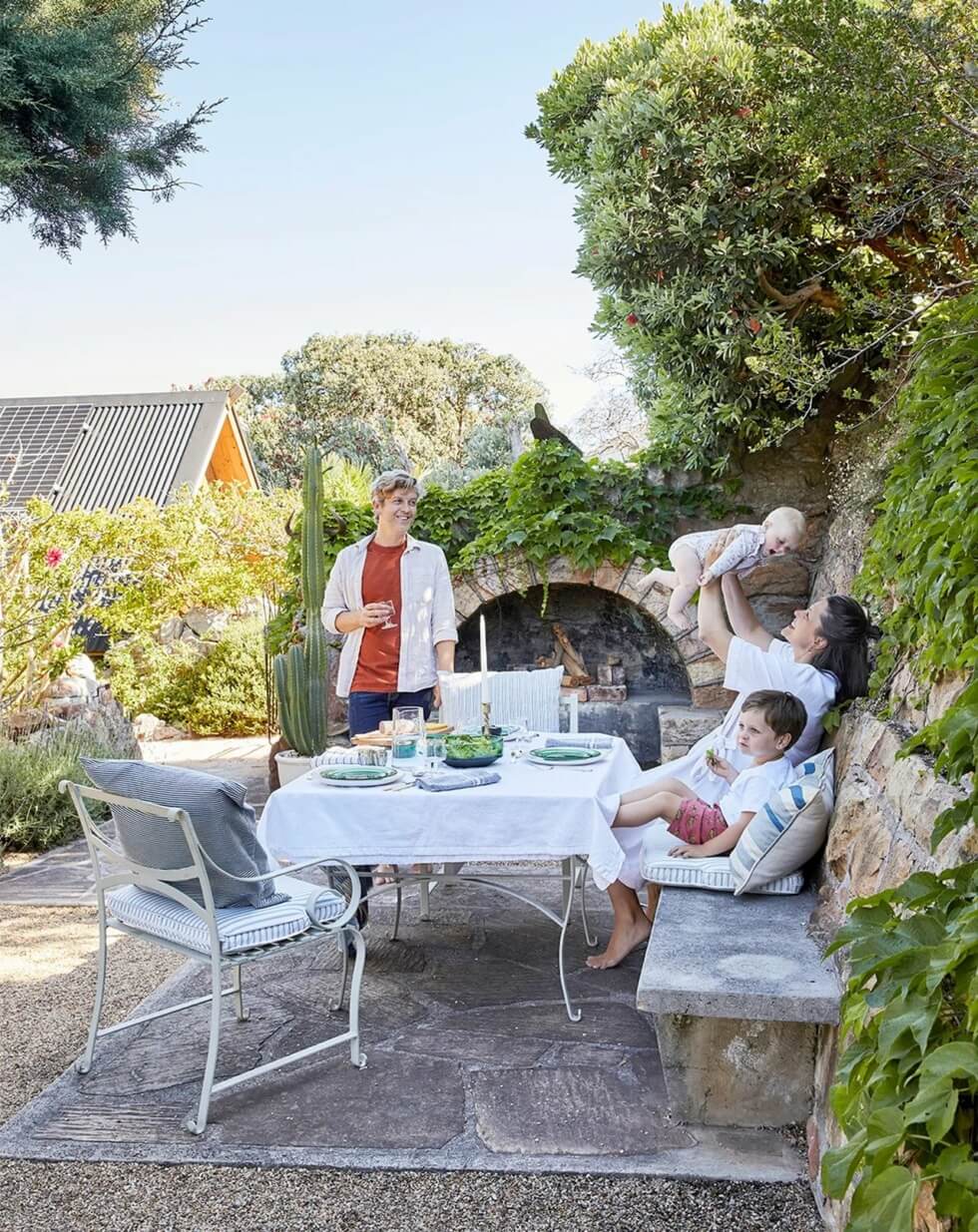
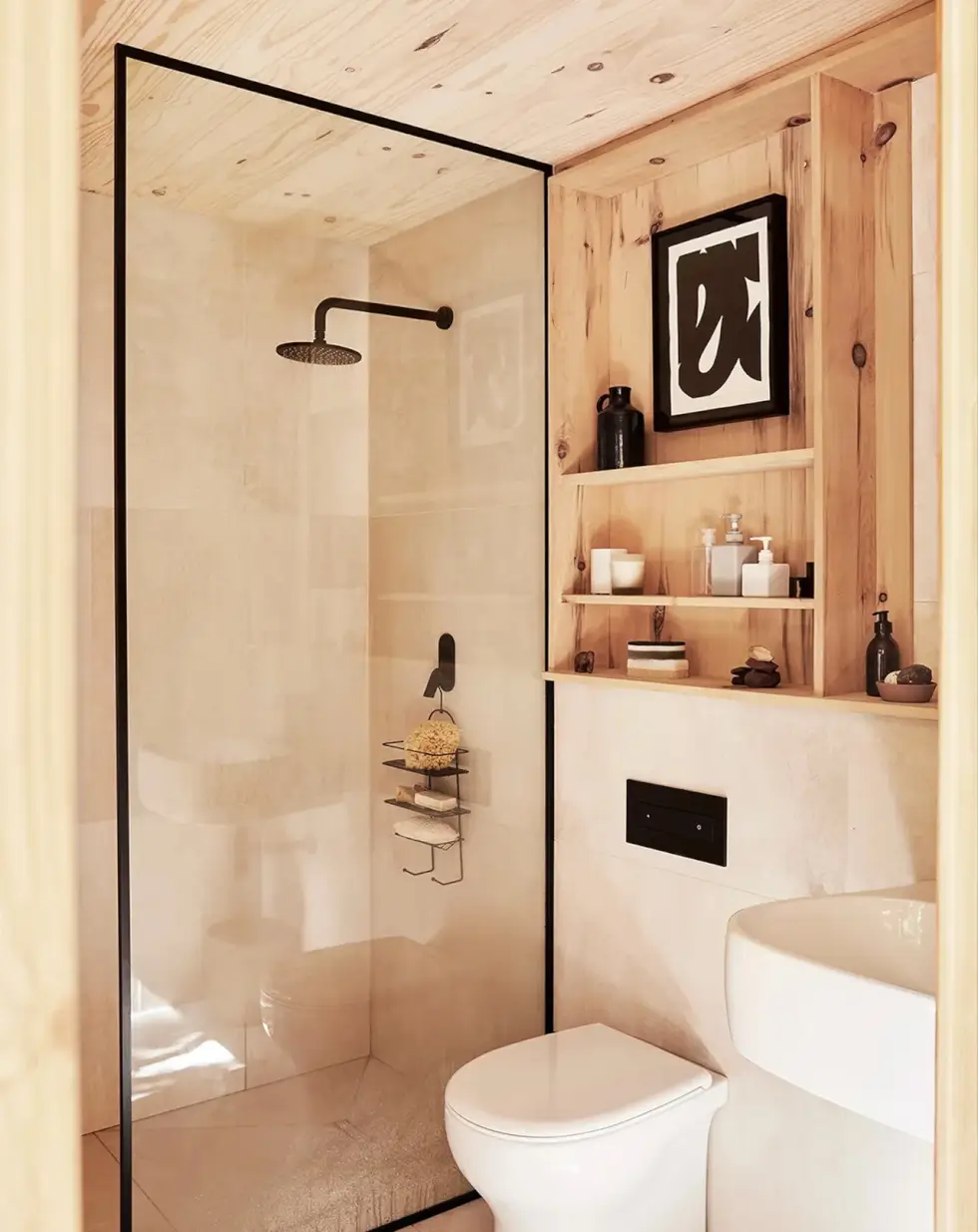
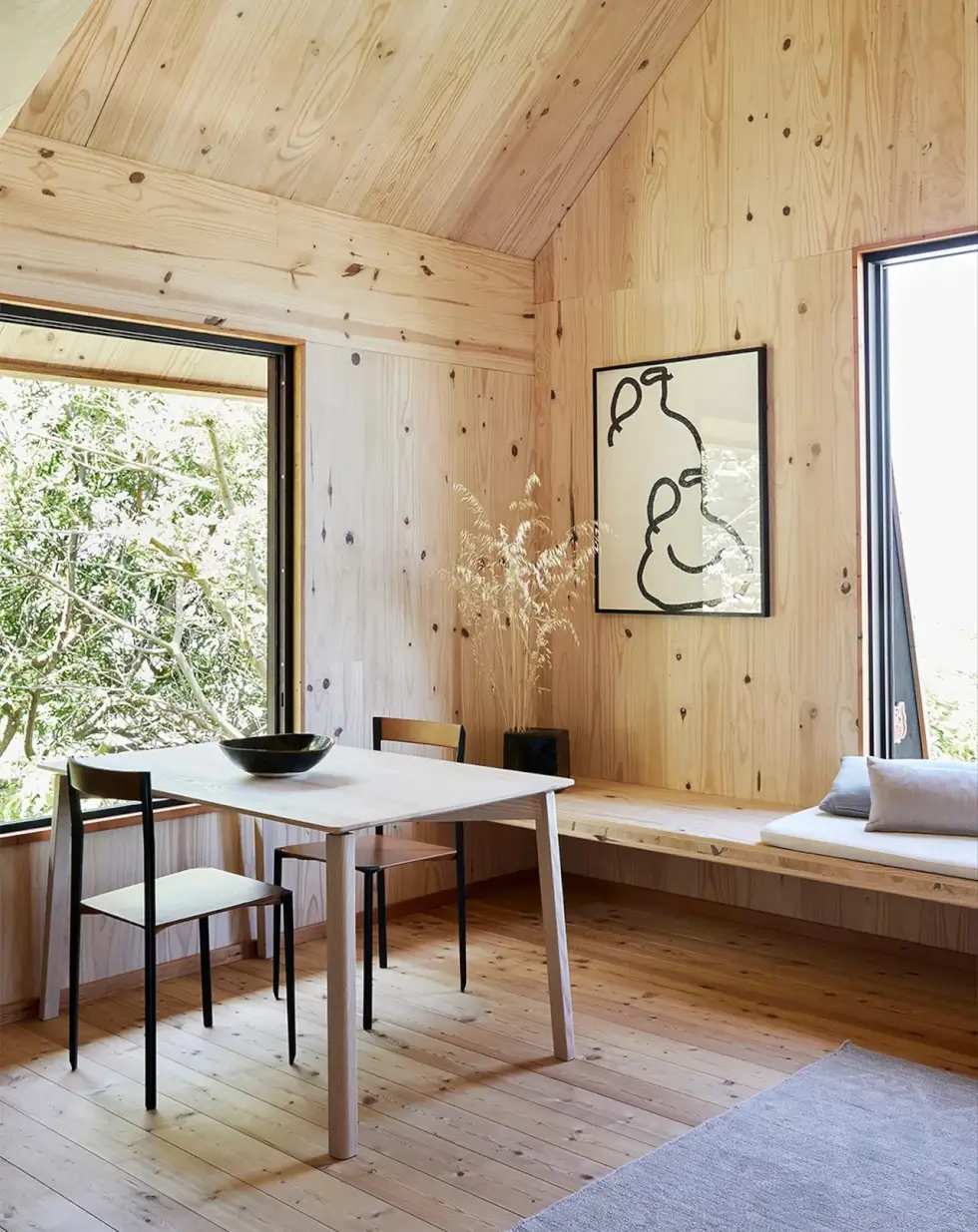
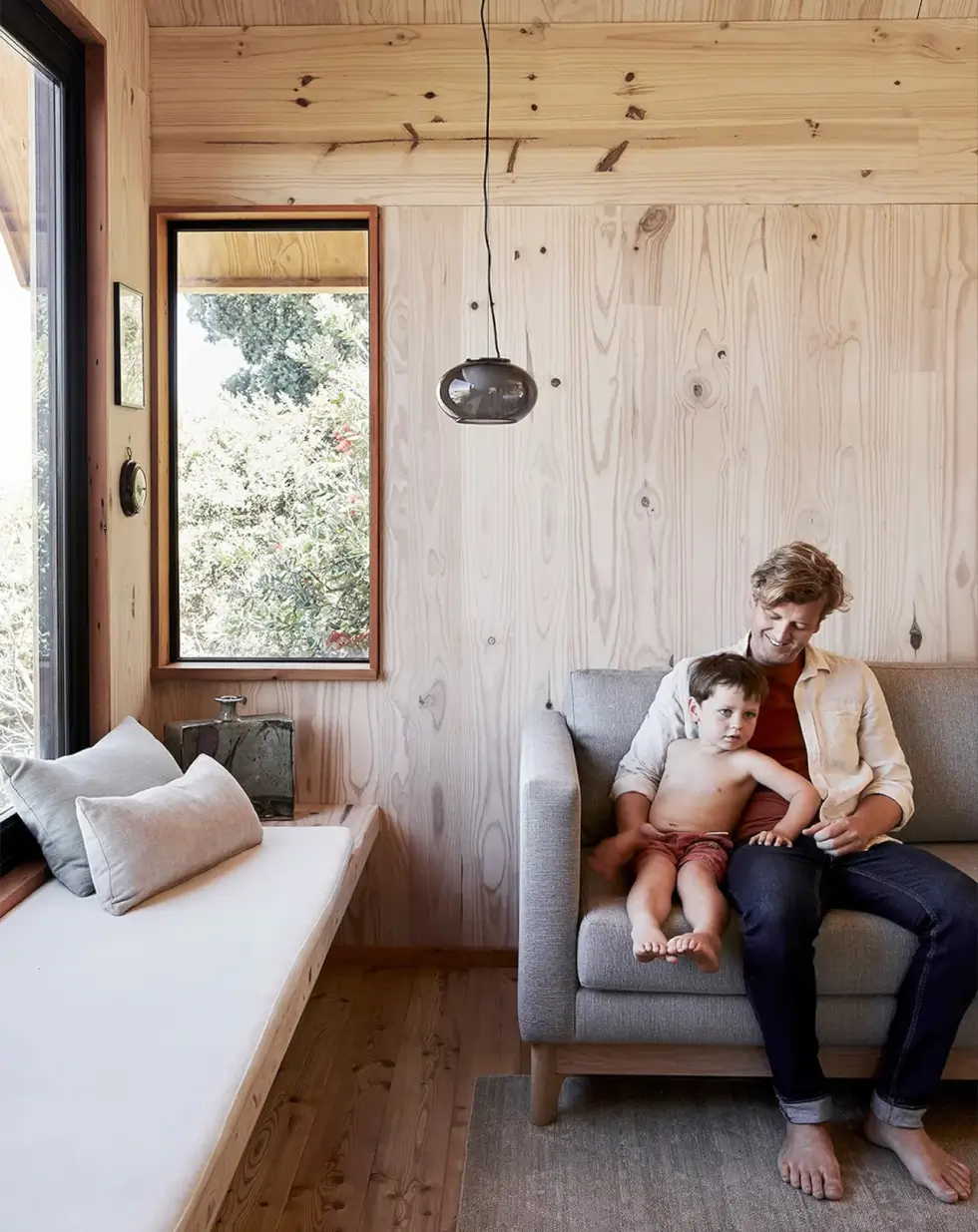
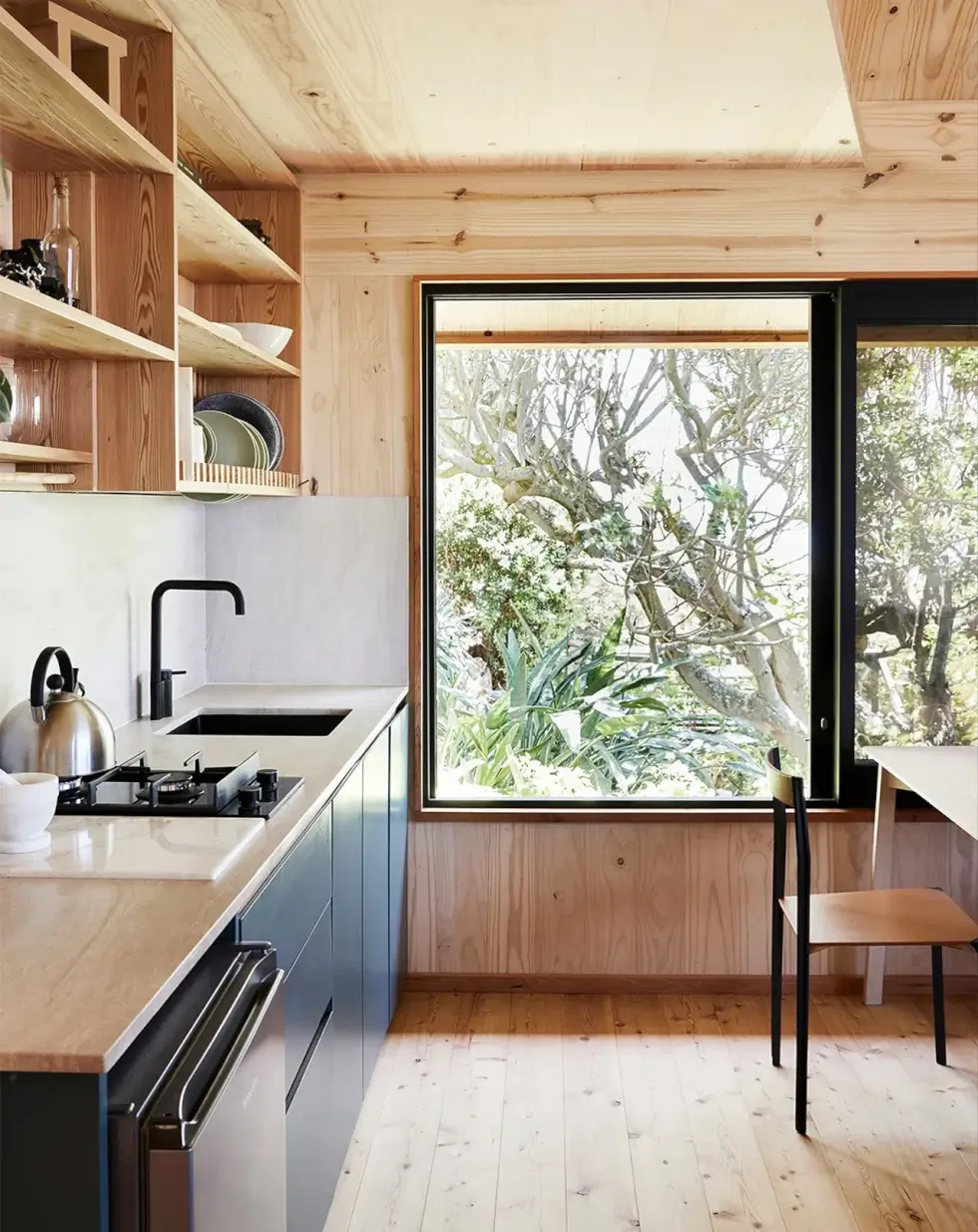
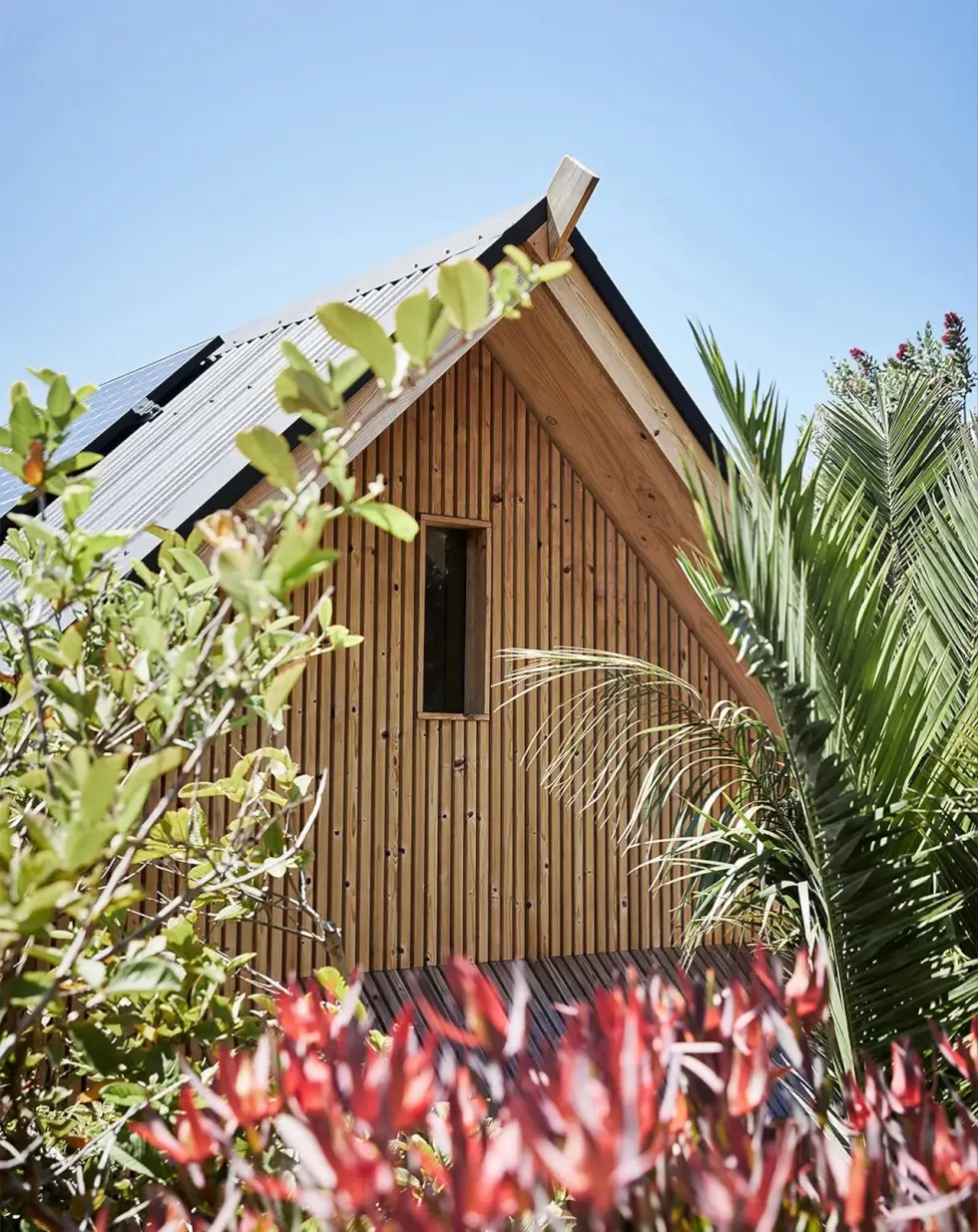
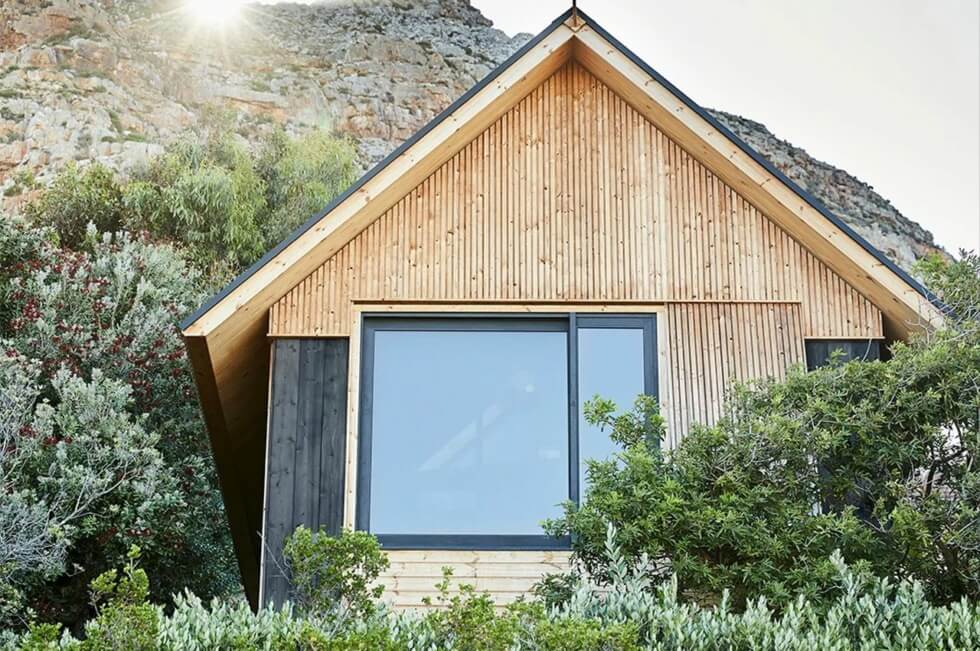
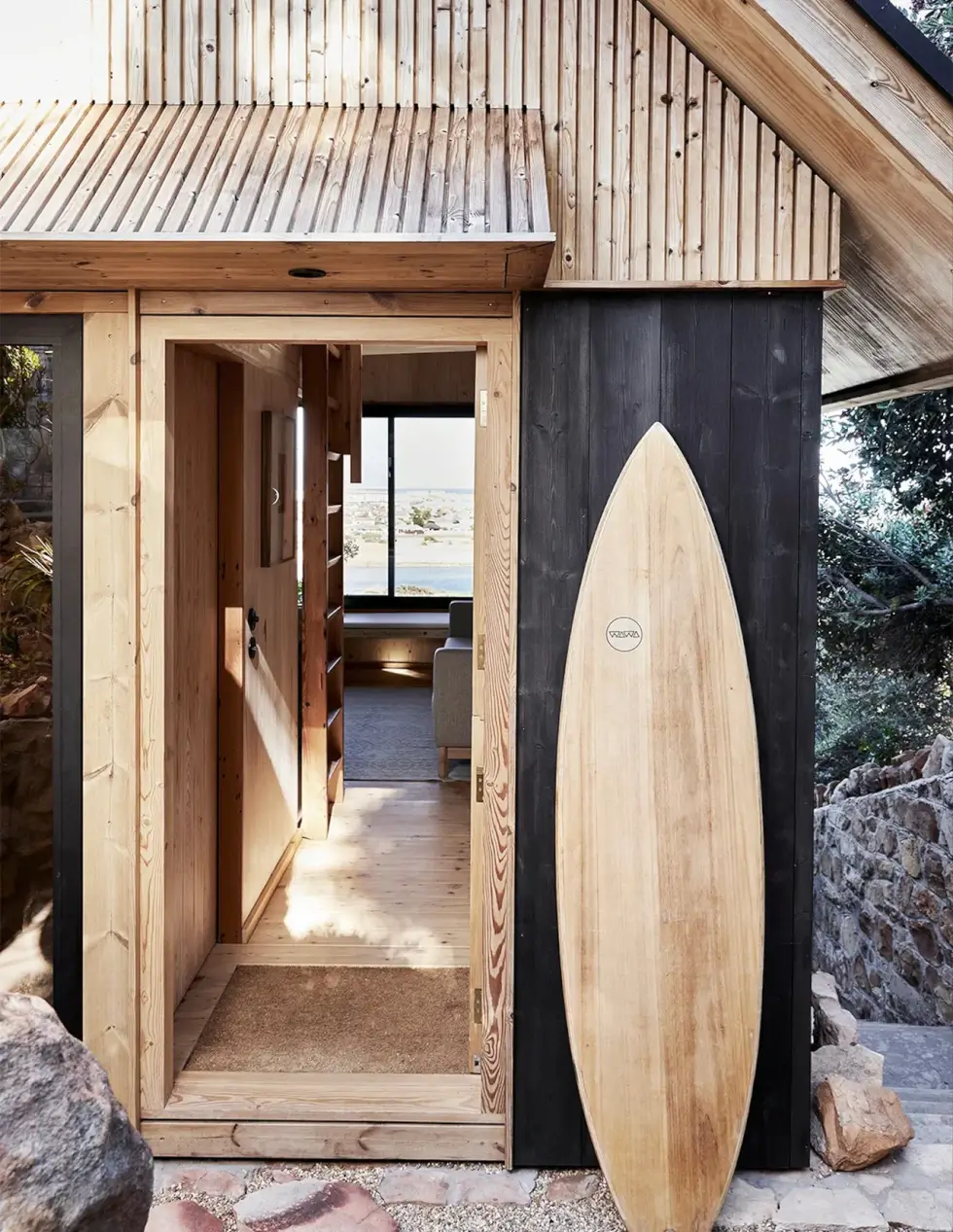
Images courtesy of Airbnb

